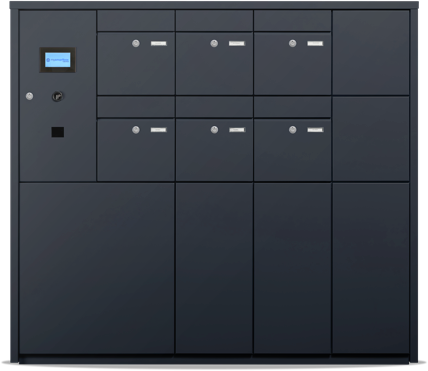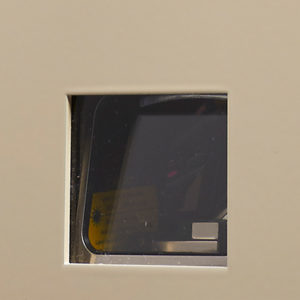- Revolutionizing Market Strategies with Quantum AI Innovations
- Understanding Quantum AI Trading Principles
- Applications of Quantum AI in Financial Markets
- Challenges in Implementing Quantum AI Trading
- The Future of Trading with Quantum Innovations
- Ethical Considerations and Regulatory Implications
- Preparing for a Quantum-Powered Future
Revolutionizing Market Strategies with Quantum AI Innovations
The advent of technology has always spearheaded transformative changes in various sectors, and finance is no exception. Today, the integration of advanced computing systems, particularly those leveraging quantum mechanics, is reshaping the landscape of market strategies. Among the cutting-edge developments, Quantum AI Trading presents groundbreaking methodologies that harness the unparalleled speed and efficiency of quantum computers. As traditional trading models struggle to keep up with rapidly changing market dynamics, the potential of quantum technologies emerges as a beacon of change. With complex algorithms, this innovative approach is not just optimizing trading strategies but also revolutionizing how traders analyze market data.
In the realm of finance, data is abundant and complex; however, processing it comprehensively remains challenging. Quantum AI Trading not only simplifies but enhances data processing capabilities, opening the door for more informed and strategic decisions. By utilizing quantum computing principles, this approach can analyze vast datasets much faster than classical computers, leading to an unprecedented edge in decision-making. Moreover, the prediction models developed through quantum algorithms exhibit a higher level of accuracy than their predecessors, which is a game-changer for investors.
The implications of harnessing quantum technologies extend beyond mere speed. They introduce a new paradigm where market behaviors and trends can be predicted more accurately. As traders and investors adopt Quantum AI strategies, the financial ecosystem adapts, leading to enhanced liquidity and reduced volatility. Such significant transformations beckon discussions on the ethical, regulatory, and practical aspects of integrating these innovations into everyday trading practices.
As we delve deeper into the world of Quantum AI Trading, the following sections will explore its fundamental principles, applications in modern finance, potential challenges, and the future landscape shaped by these innovations. Each aspect is pivotal to understanding the full relevance of quantum advancements in trading strategies.
Understanding Quantum AI Trading Principles
Quantum AI Trading blends the principles of quantum mechanics with artificial intelligence to create powerful trading systems. At its core, this technology utilizes quantum bits, or qubits, which can exist in multiple states simultaneously. This property enables an exponential increase in computing power, making it possible to evaluate countless trading variables in a fraction of the time traditional systems require. As a consequence, traders can develop strategies that are not only faster but also incorporate a broader spectrum of information from various market fronts.
In comparison to classical algorithms, Quantum AI Trading uses quantum algorithms that can optimize portfolios and predict price movements with greater precision. Traders leveraging this technology can identify market inefficiencies and potential arbitrage opportunities that might have gone unnoticed using conventional methods. The resulting efficiency creates a competitive landscape in which late trades and missed opportunities become significantly reduced.
| Data Processing | Sequential | Simultaneous |
| Speed | Limited | Exponential |
| State Representation | Binary | Superposition |
The shift from classical computing to quantum paradigms initiates not just technological advancement but a cultural shift within trading firms. As market dynamics evolve, firms are compelled to adopt these innovative strategies to stay competitive. The challenge lies not only in technology adoption but also in ensuring that market participants understand and trust these new systems.
Applications of Quantum AI in Financial Markets
Quantum AI Trading is making strides in various applications within the financial sector. Investment banks, hedge funds, and asset managers are increasingly exploring how these innovations can lead to enhanced profits and reduced risk. Algorithmic trading, risk assessment, portfolio optimization, and fraud detection are some of the core areas where Quantum AI demonstrates notable efficacy.
One prominent application is in algorithmic trading. By leveraging quantum algorithms, traders can execute high-frequency trades with optimal timing, thereby maximizing profit margins. Additionally, risk management strategies can be strengthened by employing advanced predictive models that analyze trends and potential downturns more accurately, giving traders the foresight they need.
Moreover, fraud detection mechanisms have also benefited significantly from these advancements, utilizing quantum computing’s unparalleled speed to sift through vast amounts of transaction data in real-time. The ability to identify unusual patterns instantly allows firms to mitigate risks associated with fraudulent activities effectively.
- Algorithmic Trading: Utilizing quantum computations for high-frequency trading.
- Risk Management: Enhancing accuracy in predictive modeling.
- Portfolio Optimization: Fine-tuning asset allocations based on new insights.
- Fraud Detection: Real-time identification of suspicious transactions.
Challenges in Implementing Quantum AI Trading
Despite its promising potential, integrating Quantum AI Trading into mainstream finance is fraught with challenges. The primary hurdle is the nascent stage of quantum technology, which is still evolving. As such, institutions must invest significantly in both hardware and software to build the necessary infrastructure.
Moreover, as with any advanced technology, quantum computing raises questions regarding security and reliability. Financial markets are sensitive arenas where any technological failure can lead to significant repercussions. The need for rigorous testing and validation cannot be overstated, as traders rely on these systems to carry out multi-million dollar decisions.
Additionally, regulatory concerns loom large. As financial institutions seek to adopt these technologies, regulators must keep pace with the rapid advancements to ensure market stability. Developing robust frameworks that can accommodate the unique complexities introduced by quantum trading is crucial for fostering wider acceptance and ensuring fair practices.
The Future of Trading with Quantum Innovations
The future of trading is poised for transformation as Quantum AI robustly redefines market strategies. As technology progresses, we can expect to see even more sophisticated applications that enhance trading efficiency and risk management. Financial institutions are likely to continue investing in this technology, realizing its immense potential for future profitability.
Emerging trends suggest that in the next few years, we will witness an increase in collaborative efforts between tech companies, financial institutions, and regulatory bodies. Such collaborations aim to push the boundaries of what is possible while addressing the myriad challenges accompanying the adoption of this technology.
Furthermore, as quantum computing becomes more accessible, smaller firms may also harness its capabilities, democratizing the opportunities within financial markets. The broader accessibility of Quantum AI Trading will lead to a fundamental shift in how trading is perceived, ultimately making markets more efficient and transparent.
Ethical Considerations and Regulatory Implications
As Quantum AI Trading continues to evolve, ethical considerations and regulatory implications also gain prominence. The leverage of cutting-edge technologies raises fundamental questions regarding privacy, data security, and market fairness. Financial institutions must navigate these issues to maintain trust among stakeholders and consumers.
Moreover, as automated trading solutions become more prevalent, concerns about potential job losses and automation’s impact on the workforce emerge. It becomes essential for the industry to address these ethical dilemmas and create frameworks ensuring responsible use of technology.
Regulatory bodies are also faced with the challenge of formulating policies that keep pace with rapid advancements while safeguarding the integrity of financial markets. Striking the right balance between innovation and regulation will play a crucial role in reshaping the landscape of Quantum AI Trading.
Preparing for a Quantum-Powered Future
To fully capitalize on the benefits of Quantum AI Trading, stakeholders must prepare for a quantum-powered future. This preparation involves educating market participants about the possibilities and limitations of quantum technologies. As understanding deepens, firms will be better equipped to adopt these innovations systematically and responsibly.
Future-proofing strategies include investing in talent development focused on quantum computing, forging partnerships with technology providers, and lobbying for sensible regulations. Through these collaborative efforts, firms will position themselves to thrive in a landscape dominated by Quantum AI innovations.
Ultimately, by embracing this technological shift, the financial industry can enhance the overall trading experience, paving the way for an era characterized by precision, efficiency, and growth. As market strategies adapt to these advancements, quantum technologies will continue to be at the forefront of creating value and driving the future of finance.
| Execution Speed | Milliseconds | Microseconds |
| Data Analysis | Sequential | Parallel processing |
| Predictive Accuracy | Moderate | High |
As the financial landscape continues to shift with the integration of Quantum AI Trading, it is critical for all stakeholders to stay informed and adaptable. By understanding the depths of these advancements, the industry can achieve a future that maximizes efficiency while minimizing risks.









